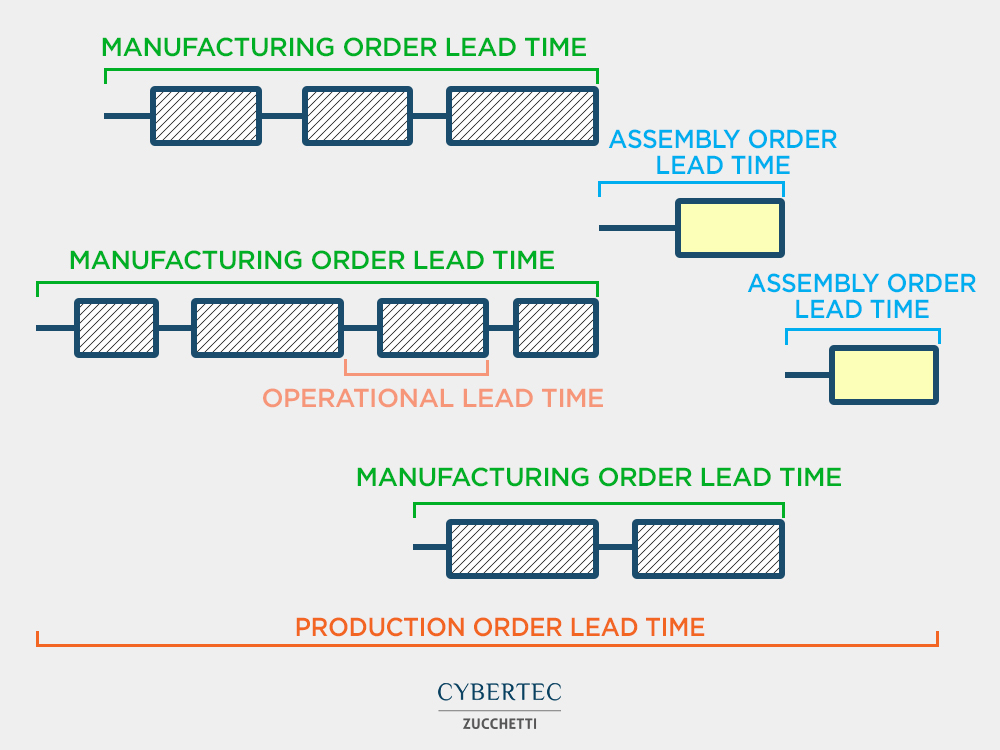Time is money. A saying as famous as it is abused, but also as true in the case of Lead Time. The time horizon to meet customer demand is in fact a key indicator, on whose accuracy many successes, or failures, of the company depend in terms of punctuality in deliveries and customer satisfaction.
But what do you mean by Lead Time? How many types of Lead Times are there? And how do you calculate it?
Whatis Lead Time
The term Lead Time can take on different meanings depending on the context in which you find yourself. In general, this term refers to the period from the beginning of a given process to its completion.
In particular, for production managers lead time means “crossing time”, or the time that elapses between the beginning and end of a production process and, in its most general meaning, indicates the time that a company takes to meet a customer’s request.
Then, Production Lead Time covers the sourcing and preparation of raw materials, their transformation into finished products, and their shipment.
In project management (or project management), the term can also be used to indicate the period necessary for the completion of a particular task or a series of related tasks.
Different Types of Lead Times
There are different types of Lead Time, in particular:
- Customer lead time: The amount of time it takes to fulfill a customer’s order.
- Order Handling Lead Time: The time from receipt of an order from the customer to the time the sales order is created.
- Material lead time: The time it takes to receive materials from a supplier after the initial order has been placed.
- Production/factory lead time: The time it takes a manufacturer to complete an order after a production order is generated.
- Lead time: the time between the end of production and the delivery of the product to the customer.
- Cumulative lead time: The time it takes to make a product from start to finish, from sourcing raw materials to sub-assembly of related units.
There are also a couple of other related terms to remember:
- Total manual cycle time: The number of days required to complete a particular task.
- Takt time: the speed with which products must be completed to keep up with customer demand.
Why is Lead Time important?
Lead Time is a central element in inventory management and keeping it under control means avoiding potential delays in delivery to customers.
Poorly managed lead time can lead to depletion of stock and failure to fulfill orders, thus incurring longer and longer lead times as the supply chain slows down.
Inadequate order management can lead to failure to comply with the Supply Chain Planning process, damaging the reputation of companies and causing them to lose market share to competitors. It is essential, therefore, to do everything possible to control delivery times as effectively as possible.
How to calculate Lead Time
There are different ways to calculate Lead Time depending on the specific context. This is because different processes have different components, which will affect the overall length.
The Lead Time of production, for example, in addition to the times of production itself, must also take into account the times prior to it (planning and procurement ) and those following it (shipping). We can therefore summarise what has been said as follows:
Lead time = pre-production time + production time + post-production time.
Regarding inventory management, Lead Time in this case is the amount of time between when a purchase order is placed to stock the products and when the order is received in stock. Order delivery times may vary between suppliers; the greater the number of suppliers involved in the chain, the longer the Lead Time is likely to be.
When calculating Lead Time in inventory management, there are two key factors to consider: the supply delay (the period between ordering and receiving inventory) and the reorder delay (the period you need to wait before ordering supplies). These two factors, together, cover the time needed for suppliers to process and fulfill orders. Therefore, the formula to calculate the Lead Time of the inventory is as follows:
Lead Time = reorder delay + supply delay.
Why Demand Matters in Lead Time
The demand in Lead Time plays an important role because it is used to calculate the reordering point, given precisely by the sum of the demand in Lead Time and the safety stock.
This particular type of demand refers to the total demand recorded in the period between when a procurement order is issued and when the goods will be delivered. This is a future demand, not yet observed in reality, which must therefore be expected.
The demand estimate in Lead Time must therefore be as accurate as possible in order to optimise stocks, i.e. use the minimum number of stocks to reach the established service level.
Whatis the reorder point
The reorder point identifies the level of inventory in stock which, once reached, requires the issuance of an order equal to the economic lot (EOQ).
Its function is to prevent the total depletion of stock in stock and thus avoid production being blocked.
It is calculated taking into account two aspects:
- The order fulfillment time to stock up on inventory.
- The safety stock, the minimum level of stock that the warehouse will always have to maintain to cope with unforeseen events such as an increase in demand or a delay in delivery.
An example of Lead Time
We can take a look at an example of cumulative Lead Time to get a better idea. Suppose, for example, that a company sells pre-assembled and custom-made products. To calculate the delivery time, it will have to include pre-production, product creation and post-production in its calculations.
Suppose orders are picked up the day after they are placed and it takes two weeks to make an item. Once packaged and shipped, it takes three days to be delivered to the customer.
Following our previous formula for production lead time, we would calculate it by summing pre-processing, processing, and post-processing together, as follows:
1 day + 14 days + 3 days = 18 days
Placing an order for a prefabricated article could instead have a shorter delivery time, and assuming that the assembly takes only two days in the processing phase, the Lead Time in this case would be:
1 day + 2 days + 3 days = 6 days
In both cases, having accurate delivery times can improve customer satisfaction and help to have clear expectations.
How to improve Lead Time
Improving Lead Time means reducing it as much as possible, without compromising other indices or aspects. There are three main actions that can be taken to improve it.
Analyze and divide lead time
The first step is to analyse procurement times, in particular the most critical ones. Subsequently, it is necessary to divide the activities, define the time intervals by means of graphs and identify points that can be optimized. A software solution can also be of great help at this stage, thanks to accurate data, calculation and simulation capabilities.
Review all internal logistics processes and sub-processes
A thorough internal analysis is used to identify any bottlenecks and obstacles that slow down the flow of materials. Even a small element can make a difference in achieving the goal and identify inefficiencies thanks to a careful analysis of the individual activities that make up a production process, reducing production times.
Handle the unexpected with the help of a software solution
Fluctuations in procurement times depend on multiple factors and often the latter are random and unpredictable. Software solutions for production management allow you to eliminate uncertainties and improve the level of service. Using a software allows you to eliminate the stress deriving from supply chain management. The CyberPlan solution allows you to easily manage production, providing intelligent demand planning and a complete and effective view of the production department, profitability and costs.
The Lead Time Software
Lead Time management can be carried out thanks to innovative software solutions that greatly simplify the work of planners and Supply Chain Managers. These solutions are APS, or Advanced Planning and Scheduling software, which allow companies to better manage production planning and finite-capacity scheduling processes. With these tools it is possible to reduce the average Lead Time and improve the productivity of the plants. With the APS CyberPlan, in fact, companies create optimized sequences taking into account production constraints, simultaneously monitoring plants, equipment and materials. Thanks to this solution, manufacturing companies can increase production efficiency by reducing set-up times and lead times.
To learn more:
To learn more about CyberPlan and how to increase the performance of your supply chain download the free supply chain guide or contact Cybertec and book an appointment with an expert who will answer your questions.

